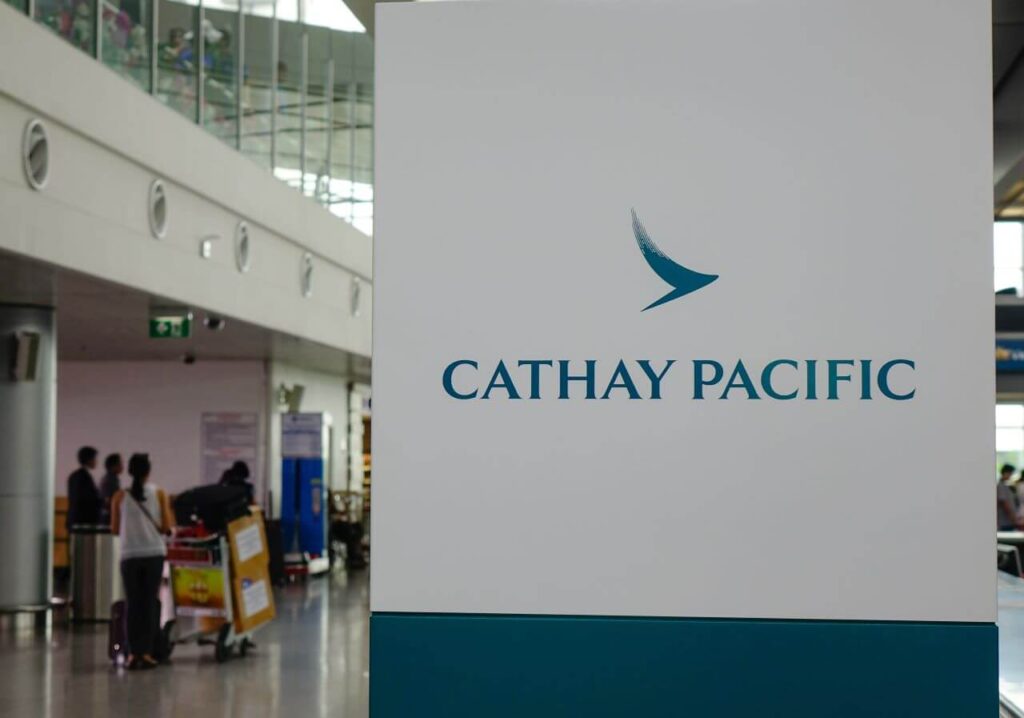Caught in the crossfire between the politics of mainland China and anti-government protests in Hong Kong, Cathay Pacific is suffering the consequences. The Cathay Pacific Group reported a 38% decline year-on-year in inbound traffic to Hong Kong in August 2019, at the height of protest unrest that lead to airport closures and flight disruptions. Following an “incredibly challenging” month, Cathay now states it will implement “short-term tactical measures, such as capacity realignments” as it anticipates September to be just as difficult.
Cathay Pacific Group released on September 11, 2019, the combined Cathay Pacific and Cathay Dragon traffic figures for August 2019, showing a decrease in the number of passengers carried, as well as the amount of cargo transported, compared to the same month in 2018.
Cathay and its wholly-owned subsidiary Cathay Dragon, the second largest airline based in Hong Kong, carried nearly three million (2,906,954) passengers in August 2019, a fall of 11.3% compared to the same month last year. Load factor dropped a 7.2 percentage points to 79.9%.
Overall capacity or ASKSs (available seat kilometers) rose by 5.1%, but RPKs (revenue passenger kilometers) fell 3.6% compared to August 2018. Most of the decline is recorded for mainland China: ASKs for the region dropped 9.3%, while RPKs fell 28.1%.
“August was an incredibly challenging month, both for Cathay Pacific and for Hong Kong. Our inbound Hong Kong traffic was down 38% while outbound was down 12% year-on-year, and we don’t anticipate September being any less difficult,” the Group’s chief customer and commercial officer Ronald Lam stated in an official press release.
“Inbound traffic demand to Hong Kong from regional markets, particularly mainland China and North East Asia, was severely hit, though our South Pacific routes were a bright spot. As a result of reduced travel demand, an increased mix of transit passengers and the negative impact caused by the strengthening US dollar, passenger yield was under further pressure,” Lam further added.
In response to the challenging environment, including a decline in forward bookings for the remainder of 2019, the carrier states it will implement “short-term tactical measures, such as capacity realignments”.
“Specifically, we are reducing our capacity growth such that it will be slightly down year-on-year for the 2019 winter season [from end October 2019 to end March 2020] versus our original growth plan of more than 6% for the period,” Lam stated.
The disappointing results come on the heels of Cathay Pacific’s H1 2019 results release, announced on August 7, 2019. For the first half of the year, the Group reported a net profit of $172 million (HK$1,347 million), compared with a loss of $33.6 million (HK$263 million) for the same period in 2018, when Cathay managed to achieve a net profit for the first time since 2015.
The solid performance was attributed to lower fuel and non-fuel unit operating costs, despite revenue “headwinds”, including the geopolitical and trade tensions impacting demand for air travel and freight.
The results also showed that Hong Kong and mainland China are by far the biggest revenue stream for Cathay, as the region accounted for $3.3 billion (HK$26,352 million) out of the total $6.8 billion (HK$53,547 million) revenue earned in H1 2019.
The traffic figures for August and the winter season may now complicate Cathay’s efforts to achieve sustainable growth in its three-year financial turnaround program, driven by boosting revenue and slashing costs.
In August, Cathay Pacific and Cathay Dragon were subject to flight cancellations as protesters stormed their main hub, the Hong Kong International Airport (HKG), and temporarily shut down operations. Chinese authorities intervened by demanding Cathay to suspend staff that in any way are involved or support the demonstrations, as they would be banned from working on flights to mainland China or flights operating in the Chinese airspace.
As a result, Cathay is now also dealing with management upheaval. The Group was allegedly forced to make changes in the Board of Directors: in August, the CEO of the company Rupert Hogg and the chief customer and commercial officer Paul Loo were replaced by Ronald Lam and Augustus Tang, respectively. Less than three weeks later, John Slosar, who has been the chairman of the carrier since 2014, announced he would step down in November 2019.

